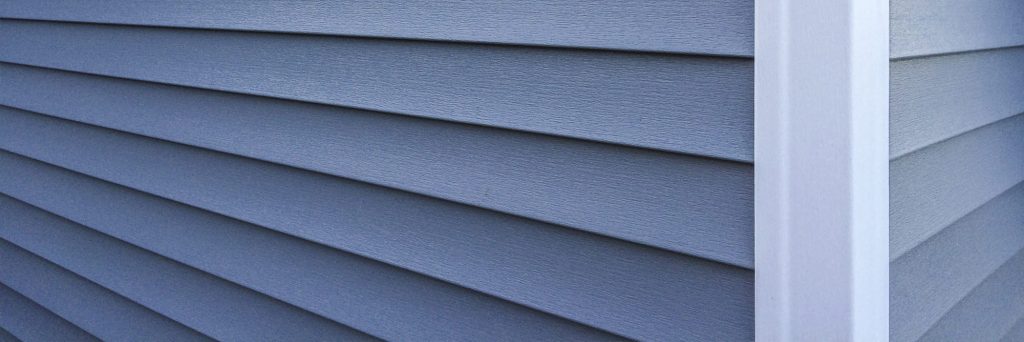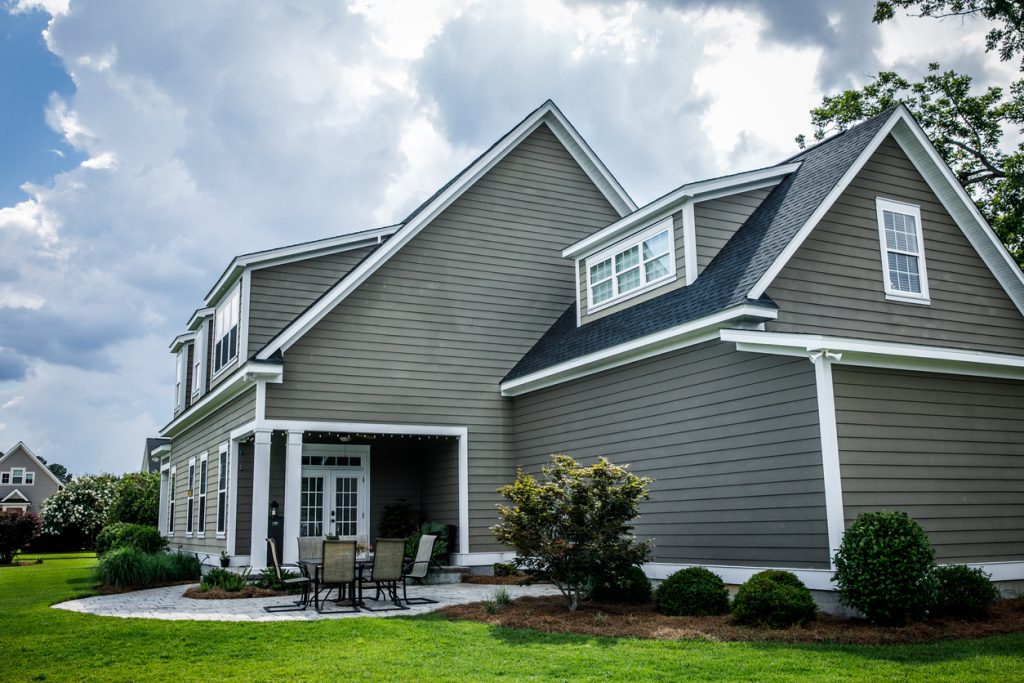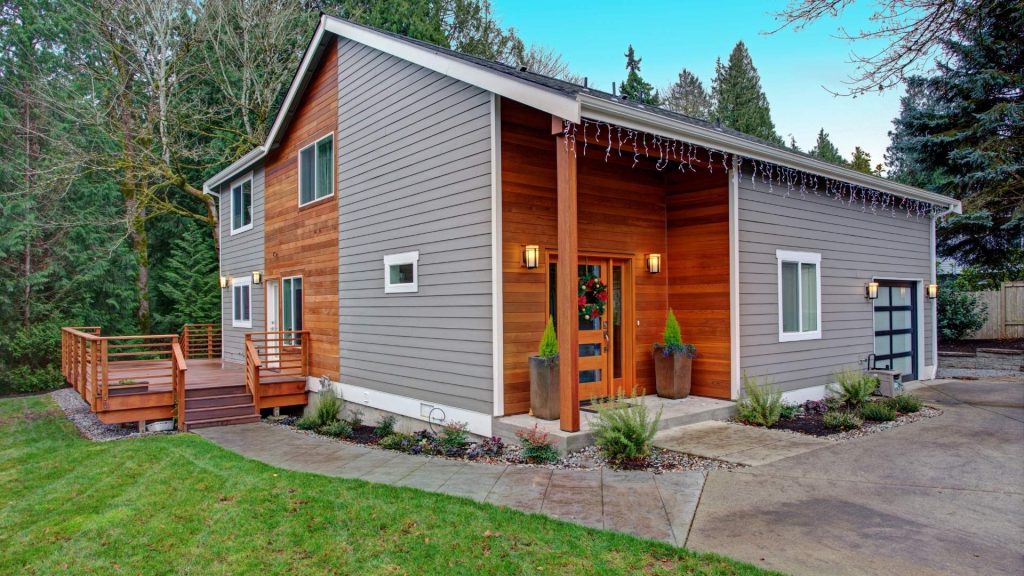Published on: March 26, 2024

Ready to learn how to install vinyl siding? You’ve come to the right place. While this certainly doesn’t rank as an easy do-it-yourself project, it is possible. You’ll need some handyman skills and many tools to take on this project. But once you have the necessary know-how and equipment, you can take on this task with moderate confidence.
Before you get started with the project, spend some time learning more about what you’ll encounter and some good rules to govern how you install your siding.
1. The siding panels must freely move from side to side.
2. During installation, push the siding panel up from the bottom. You want it to fully engage with what’s below it for a good firm lock.
3. Always put nails in the middle of the nail slots.
4. Be gentle with panels and avoid forcing them into position.
5. Leave approximately .8 mm between the fastener head and the siding panel. This will allow the panels to move freely.
6. For expansion and contraction, leave a quarter of an inch around all openings. If installing in temperatures below 40 degrees, leave 3/8 of an inch.
7. Do not caulk overlap joints.
8. Avoid stapling the siding, except in rare circumstances where you’ve removed the nail punch lock system. Doing this when it isn’t necessary could lead to ripples.
9. Always trust the manufacturer’s instructions for installation over generalized instructions, such as this guide. Every manufacturer has some mild nuances to installation.

Assemble the list of tools and equipment necessary to install your vinyl siding.
With some basic know-how and the necessary tools and equipment, you’re ready to start installing vinyl siding. Proceed with the process slowly and carefully for best results. Siding installation is truly an art.
Before you start working with siding panels, you’ll install a variety of accessories, including starter strips, corner pieces, flashing, J-channels, etc.
Start with the outside and inside corner posts. Place the corner piece in position with a quarter-inch gap between the top of the post and the soffit or eave. Install a nail at the top slot on both sides of your corner. Don’t forget to avoid driving nails in too firmly, which won’t allow your panels to move freely and allow for contraction and expansion. And place the nails in the center of the slot.
When installing, ensure that the corner post extends ¾ of an inch below the starter strip and that they are vertically straight and square.
If one corner post piece is not long enough to cover the necessary area, overlap the upper piece over the lower and cut away an inch of the nailing flange from the top piece. The top piece must overlap the bottom so that water flows down it without getting in the crack.
To ensure level siding panel installation, you must install the starter strip at the bottom of the wall. Spend some time getting this right as the rest of your siding installation will depend on this step.
Start by determining the lowest point at which you will install siding. Then go up a quarter inch. This is where your starter strip will go. Drive a nail into one of the corners of the starter strip but don’t go all the way.
Using a chalk line, go to the other corner and use a level to ensure the line is accurate. Snap the chalk line to create your level starting point. Go around the entire house and build your start lines with starter strip.
The exact application for your window and door flashing will depend on your home’s format and whether your windows have a nail fin or exterior casing.
For nail fin windows, you’ll apply a bead of sealant clear around the nailing flange as to cover the nails and their slots. Then install a 9-inch-wide horizontal sill that is level with the window’s bottom edge. Press the flashing into the bead of sealant firmly to get a good seal. Proceed with attaching the flashing to the side edges. Do the same for the head and ensure a strong seal.
For homes with a brick mold where there is no flashing, you’ll follow a different process. Ensure the window casing has a good seal to the exterior sheathing or water-resistive barrier. You can then cover the casing with a vinyl trim sheet that you install in weatherboard fashion. Start with the bottom piece. Then do the sides ensuring to overlap them with the bottom piece. Install rigid head flashing, also known as a drip cap, at the top of the window ensuring to cover the tops of the side flashing pieces.
You’ll use J-channel around windows and doors to help it receive siding. The J-channel should fit snugly around the window.
Cut the tab at the top of the J-channel and bend it down. Installing this trim will ensure water runs away from your windows correctly and prevent it from getting under the sill.
Cut the side pieces of J-channel longer than the window or door’s height and notch the top channel. For the side members, use a miter saw to cut the flange at a 45-degree angle. Bend the tabs down. Do the same at the bottom of the window.
You’ll also need to install J-channel trim over roof lines. You’ll keep the trim a half inch from the roofing material to avoid the trim from getting distorted when the roofing materials heat up. Use your chalk line to create a straight line up the roof flashing. If you need more than one piece, overlap the upper piece with the lower piece. Extend the J-channel past the roof’s edge to guarantee good runoff.
If your home has gables, you’ll need gable trim before attaching your siding. Where the gable meets at its peak, butt one section into the peak and overlap the other. Attach the J-channel every 8-12 inches with a nail. On larger homes, you’ll need more than one piece to cover the surface. In that case, be sure to overlap the channels by ¾ inch.

Now that you’ve completed adding trim and J-channel to accept the siding, you’re ready to start installing panels. You’ll start at the bottom where you have the starter strip. Securely lock the full siding panel length and then fasten it to the wall.
Remember, you want to fasten the pieces in the center of the nail slots and avoid driving the nail heads in too deep. Leaving this wiggle room allows for expansion and contraction. At the same time, ensure that the nails are going in far enough to penetrate the framing and sheathing.
Leave a gap of a quarter inch between the siding and corner posts and channels. Review the manufacturer’s recommendations for how much space to leave for expansion.
Fully engage the panel locks but without vertical tension or compression, both of which put strain on your panels. Always ensure your panels overlap by an inch to protect your walls.
When looking at the overlap between pieces, work to stagger those overlaps vertically so that all your seams are not in the same place on the wall to make it more visually attractive. When selecting where to overlap your pieces, try to keep them away from entryways and places of visual interest to keep the home attractive. Also avoid putting panels shorter than 24 inches on the beginning or ending sides.
Attaching siding panels to sections of wall without obstacles is fairly simple as you’ll only need to cut the panels to fit lengthwise. But when you come to obstacles, such as the spigot, you’ll need to trim the pieces a little more to make them fit.
The goal is to have the siding intersect the fixture. You’ll trim the siding to match the shape and contour of the fixture. Follow the same guidelines for siding overlap to ensure water can’t get behind fixtures.
Windows are also challenging to go around. Place your panel below the window and measure the width of the opening using the panel. Add a quarter inch to both sides to allow for expansion. This is where you’ll cut the pieces of siding vertically. Cut the panel with snips and a utility knife.
Install the cut siding pieces ensuring that the siding locks into the utility trim.
Finalizing your project at the rooflines requires a little extra work. You’ll run the siding up under the roof area. Then you’ll use a diverter cut from an aluminum trim sheet to ensure good drainage. If your roof has a water-resistant barrier, you’ll need to cut that barrier to slip the diverter behind the roof step flashing. Then seal the cut with tape once you’ve installed the diverter.
If your home has shutters, you’ll need to pre-drill holes in the shutters to attach them to the siding. Then drill holes in the siding where you’ll screw the shutters on. You want to holes in your siding to be a quarter-inch in diameter bigger than the screw. That way, there is room for expansion.
Attach the shutters so that there is expansion room between the shutter and the siding.
The same is true for attaching downspouts. You want to drill a hole in your siding that is a quarter inch larger than your fastener so that the siding panel can move freely when the weather changes.

If you’re debating whether to hire out vinyl siding installation or do it yourself, consider these factors.
One final step in weighing whether to install vinyl siding yourself is to evaluate the pros and cons.
Pros
Cons
When it’s time for new siding, reach out to the professionals at 2FL Windows, Siding and Roofing. They’ll help you complete the project professionally with quality workmanship, outstanding materials and energy efficiency for years to come. Schedule your free in-home consultation now to get started.
Further Reading:
Comments are closed.

Read the latest articles about siding.







[…] How to Install Vinyl Siding […]
[…] How to Install Vinyl Siding […]
[…] if you want to do this project yourself, we outline how to install vinyl siding on our […]
[…] How to Install Vinyl Siding […]
[…] How to Install Vinyl Siding […]
[…] How to Install Vinyl Siding […]
[…] How to Install Vinyl Siding […]
[…] How to Install Vinyl Siding […]
[…] How to Install Vinyl Siding […]
[…] How to Install Vinyl Siding […]